In 1844, while the Mormon Church was in the middle of a crisis involving dissention in the Church, The Prophet Joseph Smith preached a Sunday morning sermon in which he exclaimed,
“In all these affidavits, indictments, it is all of the devil—all corruption. Come on! ye prosecutors! ye false swearers! All hell, boil over! Ye burning mountains, roll down your lava! for I will come out on the top at last. I have more to boast of than ever any man had. I am the only man that has ever been able to keep a whole church together since the days of Adam. A large majority of the whole have stood by me. Neither Paul, John, Peter, nor Jesus ever did it. I boast that no man ever did such a work as I. The followers of Jesus ran away from Him; but the Latter-day Saints never ran away from me yet.” (History of the Church 6:408-409)
Due to the blatant arrogance of these words preached by Joseph Smith, this passage from History of the Church has received plenty of attention from critics of Mormonism over the years. We talked about it here on Mormon Coffee a while back. But apart from the boasting and the shocking revelation that Joseph Smith believed he had done “a work” greater than Jesus, I’ve always wondered why Joseph would have made the assertion (about keeping a whole church together) in the first place.

This illustration of the schisms of Mormonism is by John Hamer,
used in the book he co-edited with Newell Bringhurst, Scattering of the Saints.
According to historians Newell G. Bringhurst and John C. Hamer, “Schism has been a persistent theme within Mormonism from its earliest days” (Scattering of the Saints, 1). Bringhurst and Hamer note that this dissent and schism began in 1831 and, by the time of Joseph Smith’s death in 1844, ten new religious groups had formed as a result.
Joseph Smith had lost many of his close associates (including men in Church leadership and many designated witnesses to the Book of Mormon) as they lost faith in the Prophet and began their own “true” churches.
So why did Joseph Smith boast about keeping a whole church together? In thirteen short years his church had broken into almost a dozen pieces.
After the Prophet’s death, when he was no longer here to “keep [the] whole church together,”
“The pace of Mormon schism and fragmentation accelerated… Among the noteworthy Latter Day Saints opposing [Brigham] Young and the Twelve were members of Joseph Smith’s own family, specifically his legal wife Emma, his mother Lucy, and his younger brother William – all of whom eventually joined and/or affiliated with various Midwestern expressions of Mormonism.” (Scattering of the Saints, 5)
The fifteen-plus “important groups” that emerged after Joseph Smith’s death, along with those formed during the Prophet’s lifetime, in turn fragmented into yet more Mormon churches, reaching (cumulatively) well over 400 distinct groups. Based on information from Steven L. Shields, a noted expert on schisms of the Mormon Restoration movement, “as of 2007, the number of distinct Latter Day Saint groups large enough to field an active congregation is estimated to be approximately eighty” (Scattering, 9).
Did Joseph do a greater work than Jesus in keeping a church together? Did “the followers of Jesus [run] away from Him; but the Latter-day Saints never [run] away from [Joseph]”? History proves that Joseph’s was an empty boast. What’s more, it was a foolish boast.
The biblical prophet Jeremiah recorded,
“Thus says the Lord: ‘Let not the wise man boast in his wisdom, let not the mighty man boast in his might, let not the rich man boast in his riches, but let him who boasts boast in this, that he understands and knows me, that I am the Lord who practices steadfast love, justice, and righteousness in the earth. For in these things I delight, declares the Lord.’” (Jeremiah 9:23-24)
The apostle Paul repeated this admonition twice:
“Let the one who boasts, boast in the Lord.”
(1 Corinthians 1:31; 2 Corinthians 10:17)
In opposition to Scripture, Joseph Smith boasted in his self-perceived might. And rather than boasting in the Lord, he boasted against the Lord.
Why did he do that?

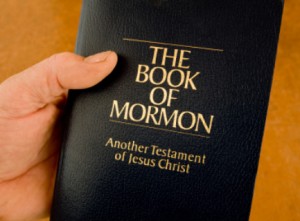
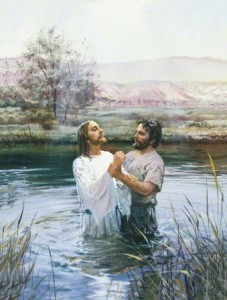
 LDS Apostle Orson F. Whitney stated that “There is no salvation without repentance, and no remission of sin without baptism” (Whitney, Baptism: The Birth of Water and the Spirit, 6). Yet what did Peter mean in Acts 2:38 when he said, “Repent, and be baptized every one of you in the name of Jesus Christ for the remission of sins…” (emphasis added)? Does this mean that we receive remission of sins via baptism? According to Mormonism, yes. According to a correct interpretation of the Bible, no. “Eis” is the New Testament Greek word for “for” in this case. Ron Rhodes points out that this word for is a “preposition that can indicate causality (‘in order to attain’) or a result (‘because of’)” (James Bjornstad, “
LDS Apostle Orson F. Whitney stated that “There is no salvation without repentance, and no remission of sin without baptism” (Whitney, Baptism: The Birth of Water and the Spirit, 6). Yet what did Peter mean in Acts 2:38 when he said, “Repent, and be baptized every one of you in the name of Jesus Christ for the remission of sins…” (emphasis added)? Does this mean that we receive remission of sins via baptism? According to Mormonism, yes. According to a correct interpretation of the Bible, no. “Eis” is the New Testament Greek word for “for” in this case. Ron Rhodes points out that this word for is a “preposition that can indicate causality (‘in order to attain’) or a result (‘because of’)” (James Bjornstad, “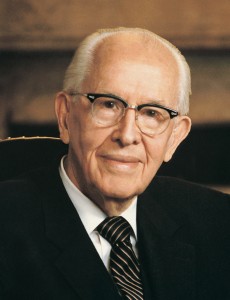
 If this was false doctrine in 1980, published in an official Church manual in 1982, and published again in an official Church manual in 2010, the question must be asked: Who’s minding the store??
If this was false doctrine in 1980, published in an official Church manual in 1982, and published again in an official Church manual in 2010, the question must be asked: Who’s minding the store??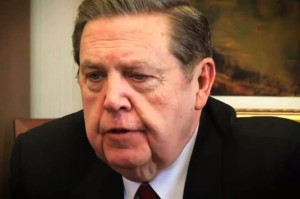

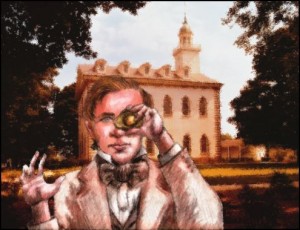
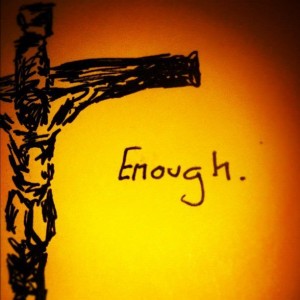 This, my friends, this is the real mystery–that though we are sinners, God rescues and redeems us in Christ if we will but surrender to Him in faith. We don’t need Mormonism. We don’t need “new revelation.” We don’t need Mormon temple ordinances. We don’t in any way need Joseph Smith.
This, my friends, this is the real mystery–that though we are sinners, God rescues and redeems us in Christ if we will but surrender to Him in faith. We don’t need Mormonism. We don’t need “new revelation.” We don’t need Mormon temple ordinances. We don’t in any way need Joseph Smith.